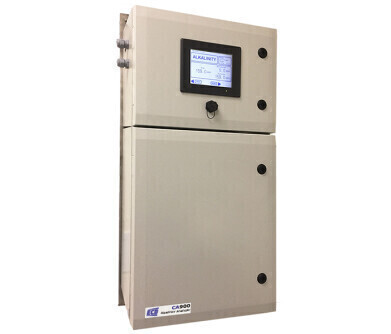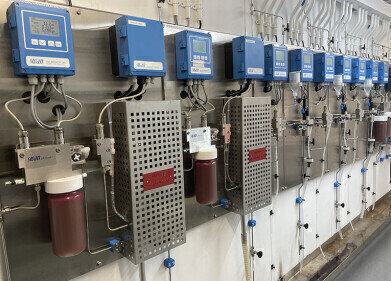Water Quality Monitoring
Improving water pipe corrosion prevention and water quality with precise alkaline measurement technology
Nov 02 2023
Municipal water engineers tasked with preventing pipe corrosion by carefully balancing system pH/alkalinity/DIC levels will find that the highly sophisticated CA900 Alkalinity Analyser from Electro-Chemical Devices (ECD) automates routine alkalinity measurement with a highly cost-effective approach. International regulatory bodies, such as the U.S. EPA have approved methods of preventing corrosion in piping that require the understanding and balancing of the proper relationship between pH, alkalinity and DIC levels. Otherwise, toxic lead and copper contaminants can be accidentally released into the water system, which corrodes piping and contaminates the drinking water. Alkalinity is a measure of the capacity of water to neutralise acids (pH). Alkaline compounds such as bicarbonates, carbonates and hydroxides remove hydrogen (H2) ions and lower the acidity of the water to prevent pipe corrosion. Water quality depends on maintaining the proper balance of pH and alkalinity levels, which is essential in everything from drinking water production to wastewater processes.
Alkalinity measurements inform us of the capability of water to neutralise acids and maintain a safe pH level. The highly advanced CA900 Alkalinity Analyser has been developed so that municipal water engineers can prevent corrosion in the pipes by balancing pH/alkalinity/DIC levels in the system. This extremely precise instrument automates routine measurements of alkalinity, cost effectively, while helping to preserve and extend the lifespan of water network pipes. International regulatory bodies have approved methods of preventing corrosion in which accurate alkalinity data can play a major role in achieving the ideal levels of pH, alkalinity and DIC; this significantly reduces the chances of accidental releases of toxic lead and copper contaminants into the water system, corroding the pipes and contaminating drinking water.
The CA900 Analyser uses advanced titration technology to calculate alkalinity by dispensing measured doses of a titrant fluid into a reaction cell while monitoring the pH level to its end point. The titrant concentration and quantity dispensed is used to calculate the sample’s alkalinity level. The analyser typically carries out a single measurement per analysis cycle; its program sequence comprises of a cleaning cycle, sample acquisition, pH monitoring, adding and mixing titrant fluid, calculating results and storing data. Users can modify the frequency of analysis between to suit their specific needs. Precise alkalinity data is crucial for effective treatment of both municipal drinking water and wastewater, where pH level can affect the wastewater anaerobic digestion process.
Alkalinity in surface water generally occurs from the presence of calcium carbonate (CaCO3), leached from soil or rock and deposited in surface or groundwater. The intelligent and user-friendly CA900 Alkalinity Analyser automates measurement, so untrained operators can set and start up the instrument in under 15 minutes with no special tools required. The process just involves connecting the sample, waste and reagent lines and then powering up the factory pre-calibrated device. Wall mounting hardware is standard, with a benchtop stand with reagent holder available as an option.
Users have a choice of four different factory pre-set alkalinity calibration ranges: 0 to 50 ppm, 50 to 200 ppm, 200-1000 ppm, and 0 to>1000 ppm. The analyser is delivered ready to go immediately at the desired calibration range. The CA900 also includes four 4-20 analogue outputs, an Ethernet digital output and four user-configurable alarm relays. Obtaining data, or customising analysis routines, are simple tasks thanks to the analyser’s easy-to-use menu structure and touchscreen interface. The CA9000 can be web-enabled and used as a powerful internet of things (IoT) device for remote monitoring projects or interfacing with handheld devices (for example: PC’s laptops, mobile phones, tablets, or controllers).
Digital Edition
AET 28.2 April/May 2024
May 2024
Business News - Teledyne Marine expands with the acquisition of Valeport - Signal partners with gas analysis experts in Korea Air Monitoring - Continuous Fine Particulate Emission Monitor...
View all digital editions
Events
Jul 30 2024 Jakarta, Indonesia
China Energy Summit & Exhibition
Jul 31 2024 Beijing, China
2024 Beijing International Coal & Mining Exhibition
Aug 07 2024 Beijing, China
IWA World Water Congress & Exhibition
Aug 11 2024 Toronto, Canada
Aug 25 2024 Stockholm, Sweden and online









.jpg)








